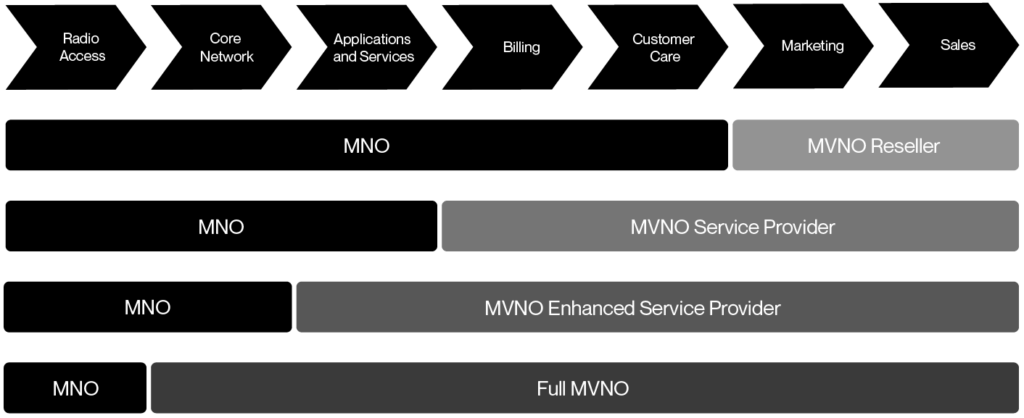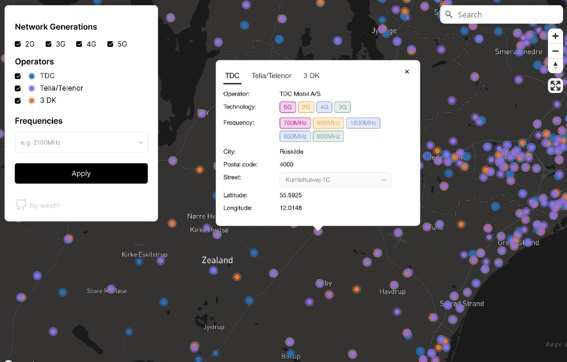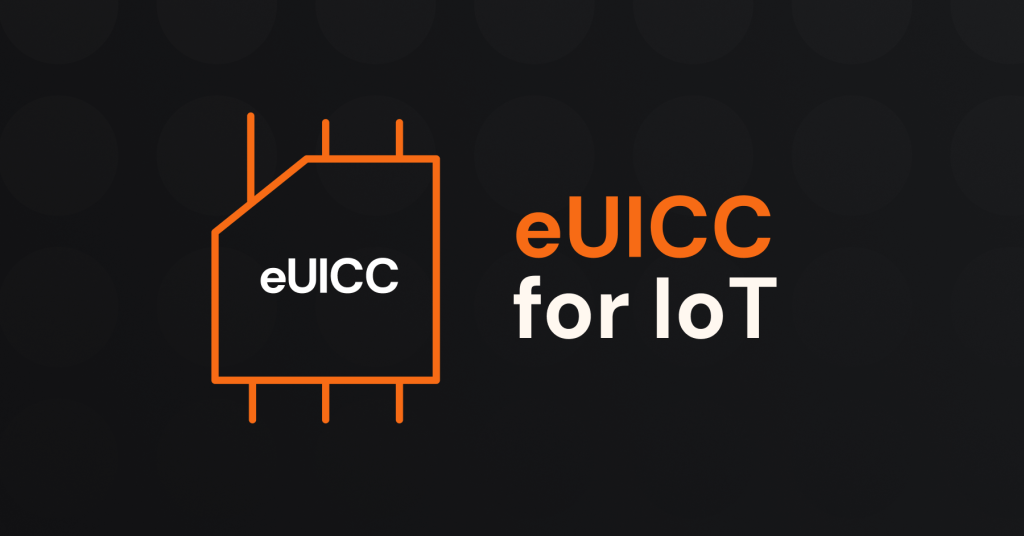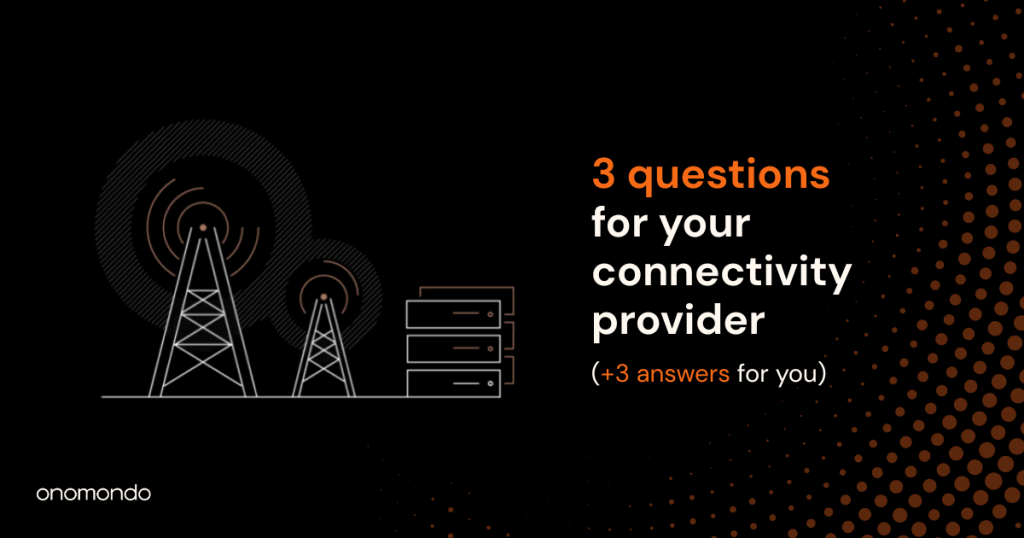This article offers tips on how to maximize global coverage from the perspective of cellular connectivity for the internet of things (IoT).
We’ll cover what we know at Onomondo and how to improve IoT coverage through better connectivity software.
Let’s get into it!
Table of Contents
Work with a partner who has many networks
This is a bit of a no-brainer. The more networks your SIM can access around the globe the better the coverage will be.
Some operators only have one network in one country, and have roaming agreements with foreign networks. Others, like T-Mobile and Vodafone, have larger global footprints offering connectivity in dozens of countries. And then Onomondo has over 590+ local networks with full-core integration available to customers.
So not all operators of cellular IoT networks are created the same. Let’s dive in to what sets them apart.
MNO vs MVNO
Depending on whether you go with an MNO, MVNO or Full MVNO, you will get different levels of coverage and insights into what’s happening with your data.
- MNO (Mobile Network Operator)
MNOs run Radio Access Networks (RAN), owning access to spectrum for the respective country and access to base stations and antennas (although they do not necessarily own the physical infrastructure of the tower). Vodafone, T-Mobile, Orange, TDC, and China Mobile are examples of large MNOs.
- MVNO (Mobile Virtual Network Operator)
MNOs lease access to their RAN to MVNOs, something which is usually enforced by law to combat monopolies. MVNOs will typically lease access to multiple RANs around the global, creating a network of networks made up of multiple MNO networks.
- Full MVNO
Some MVNOs are just resellers of SIMs from MNOs under a different brand name and with different ways to pool data. Others integrate their own core network into the MNOs radio access technology and have complete insights into data passing through the network.

You can read a longer explainer about cellular networks in this article: Cellular IoT networks explained.
True global connectivity
Although some MNOs are big (Vodafone operates in 21 countries for example), some MVNOs make agreements with multiple MNOs and have even better coverage.
There are a few Full MVNOs out there that have deeply integrated their core network with one or more MNOs. But none have gone as far as Onomondo and created one, truly global network for IoT devices.
At Onomondo, we’ve integrated our core with all 680+ networks in our global footprint.
This gives users real-time insights in every network their devices attach too. It lets users avoid the problem of permanent roaming restrictions, where devices get banned from the network after roaming in a network for over e.g. 45 days (Read more: IoT’s struggle with Permanent Roaming and potential solutions). And it means we can give immediate and itemised billing information as we aren’t reliant on a third party to understand what’s happening in the network.
Watch the webinar: Maximize Device Coverage: Hardware and Software Perspectives.
Featuring Henrik Aagaard (CTO, Onomondo) & Chris Guest (CEO, Lightbug) in a webinar about best practices in IoT device coverage.
Use multiple networks per country
You’ve probably experienced it on your cell phone. You’re travelling in the countryside and you’ve lost reception or you’re stuck on two bar 3G. But your partner, on the other hand, is happily streaming Netflix on 4G in the same location.
The issue of differing coverage quality in localised spaces is exactly the same for IoT devices.
Operators place their antennas and technologies (3G, 4G etc.) in the places where they think it will have the most impact. The system works really well, until it doesn’t.
One of our devs created this nifty site which illustrates coverage and the available technologies throughout Denmark really well: https://telemaster.dk.
Even with Denmarks great standard of coverage by the three main operators, you will see that they are not all equally good across all areas of the country. Additionally, the network technologies (such as 4G and 5G) available on each base station (aka cell tower) vary from operator to operator and location to location.

To maximize coverage, you want your device/phone to be able to automatically access the network with the best coverage in a given location. In short, you want to have access to all the networks in a country to be able to maximize coverage.
Why just give your device access to TDC in Denmark when it can have more reliable coverage when it can access Telenor and 3 as well?
At Onomondo, we make it possible to select the networks each device can connect to via Network Lists. This means you can add or remove any of our 680+ networks to your SIMs personalised coverage map. It’s entirely up to you and all of this is available via our API as well, of course.

Network selection as described above is quite unique to Onomondo because of how we’ve set up our network. Others can’t offer this in the same way as they don’t have the breadth of RAN integration that we have achieved (we were the only ones with a CTO stubborn enough to do it).
This ties into a key factor in automatic network selection: you need to make sure your SIM doesn’t have a PLMN list on it.
Don’t use PLMN lists
SIM cards usually have a Public Land Mobile Network (PLMN) list on them. The PLMN list tells the SIM which networks it can attach to in a prioritized order.
The list is helpful for traveling with your phone. Your MNO will use the PLMN list to define the set of networks your phone can roam on while overseas.
But PLMN lists aren’t smart. Thanks to the PLMN list, your device could prioritize networks with weak signals over networks with strong signals.
Fortunately, it’s possible to leave them blank. In this scenario, the radio module will attach to a strong enough network (also called -85 dBm) and not continually try to connect to a prioritized weak network.
Not having a PLMN list also means that the strategy of having multiple networks per country is optimised. Now your device has multiple networks to choose from in a location and will choose the strongest (or first strong enough one it finds) by default.
You can read more about PLMN lists here: PLMN: Improve coverage with automatic network selection.
eUICC isn’t ideal for maximizing coverage
eUICC is a great way to avoid permanent roaming issues. Loading multiple operator profiles onto your SIM, ensuring that you have at least one local operator available for the country your device finds itself in, will avoid a permanent roaming ban.
But make sure you take a look at the settings. It’s likely you only have one operator added per country and will not benefit from having access to multiple operators in any given country.
Additionally, eUICC software comes with a form of vendor lock-in. If your eUICC vendor suddenly isn’t suitable for the coverage you need (e.g. due to technology limitations), you do not have the freedom to leave that would keep your devices future-proofed.
New IoT technologies
Traditional cellular technology wasn’t developed with IoT in mind. That means that IoT use cases like smart meters, indoor air-quality sensors, and leak detection sensors can struggle to get coverage indoors. It also means that modems are more expensive than they need to be and excessive amounts of power are used.
Fortunately, new cellular technologies developed for IoT have been developed. NB-IoT and LTE-M are Low Power Wide Area Networks (LPWAN) that are available right now.
These new forms of connectivity are still in their early stages (NB-IoT still needs to have wholesale roaming agreements for example), but already provide massive benefits for devices that need to use a low amount of power, come in smaller form factors, need to be cheap, or require deep penetration.
There is debate on which of the two technologies is best. At the end of the day, it depends on your use case, but in general, we’d say that LTE-M has a lot more flexibility and generally has the same strengths as NB-IoT.
You can read a full analysis here: NB-IoT vs LTE-M: A comparison of the two IoT technology standards.
If you can’t decide between technologies, why not use multiple?
Fallback technologies
Going back to our earlier discussion on having multiple networks in each country. It also makes sense to choose a modem with multiple technology options available.
You can see in telemaster.dk, for example, that each base station has varying technologies available.

So look for modems with e.g. 2G, 3G, 4G, Cat 1 bis fallback. You’ll lessen your chances of losing coverage and have the best possible chance of your devices not going dark.
Keep asking questions
There are no dumb questions in IoT. It’s quite a broad field with a lot of new ideas being added every month. That means it’s unfortunately quite common for IoT projects to fail. What works in PoC will often struggle or fall flat in production due to some considerations about global connectivity being missed.
All we can say is that it’s important to keep asking your potential connectivity provider challenging questions and to think big.
This podcast on scaling IoT globally is a good next step in researching coverage issues.








